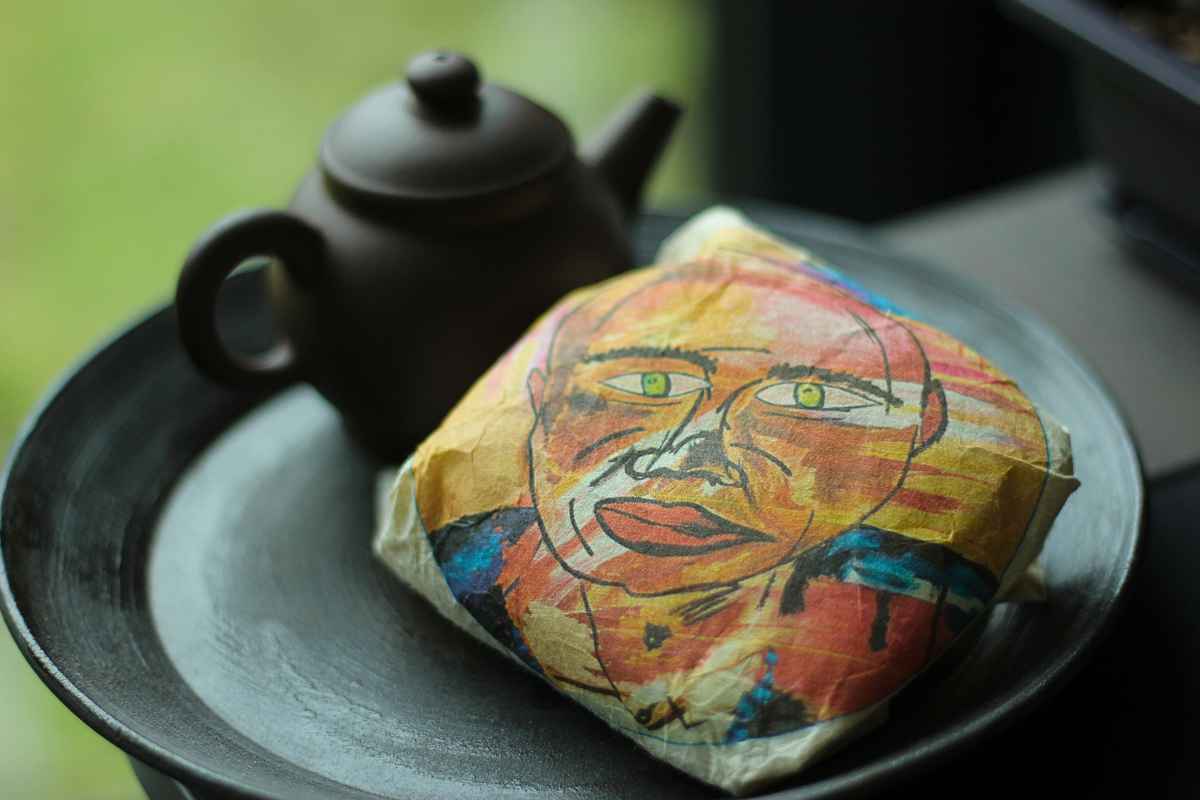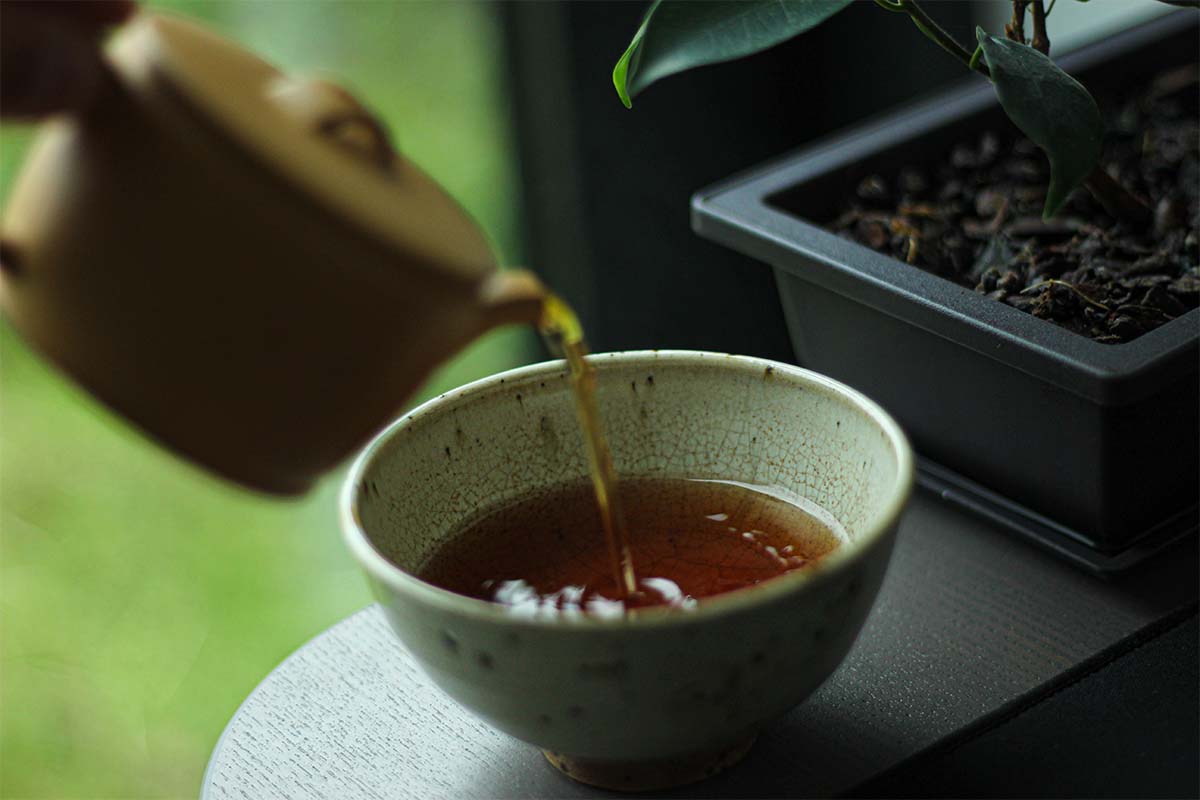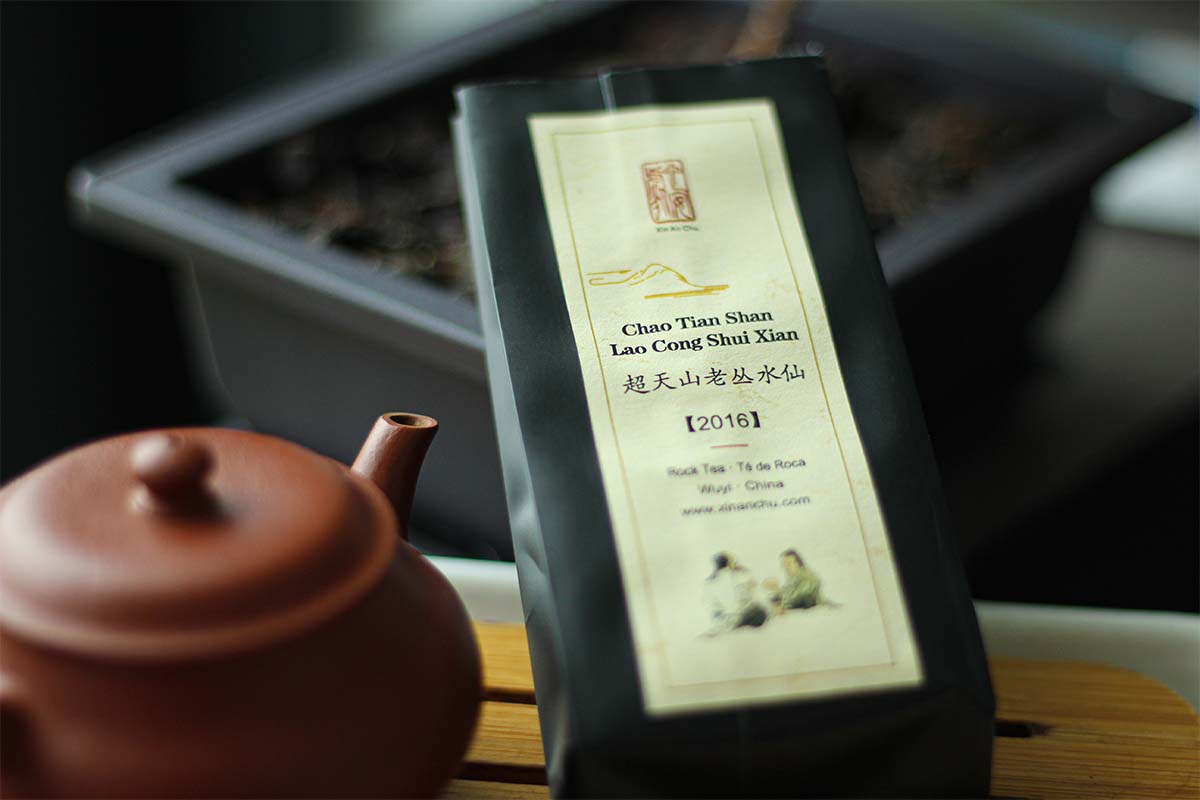After drinking the 2014 version, it was time to drink the 2015 Jianyang Lao Bai White Tea from ANMO. The 2014 impressed me quite a bit so you can imagine I was curious to experience the 2015 version as well.
If you want to read about the 2014 Jianyang Lao Bai White Tea, click here.
2015 Jianyang Lao Bai White Tea
This tea is the exact same tea as the 2014 version, except that it’s from 2015. It’s also from the Jianyang area, which is in Sichuan Province in China, and it is made from the Lao Bai cultivar. The tea leaves are pressed into cakes and change dramatically over a relatively short time period. Before it’s ready for consumption, the producer first stores the tea cakes for 500 days. This is necessary for the flavours to develop and that the producer can control this ageing process. Due to this process, the 2018 version isn’t available yet. In addition to the 2014 version, I also have the 2016 and 2017 versions of this tea.
Have you considered subscribing to Tea Adventures? You can enter your email address in the sidebar and get updates whenever I publish a new article. You never have to miss an article again by joining our mailing list.
When I look at the dry leaves, I see small stems and medium-sized pieces of leaves. The colours are lighter tints of brown and some bright green ones as well. The aroma is sweet with some hints of plants in a wet forest. Nothing too prominent; it’s rather subtle.
After infusing, I notice that there are quite a few big leaves in there in combination with smaller pieces. The colours are different kinds of dark brown. The aroma is a bit different as well as it’s still sweet, but it’s more of a red fruit kind of sweetness.
Tea Tasting
- Water 90°C
- 5.1g for a 90ml porcelain gaiwan
- 1 rinse
- 6 infusions
Infusions
Infusion 1 (30 sec): the colour of this first infusion is very light yellow. I’m getting a kind of sweetness, but it’s not really breaking through. There are also some notes of hay, although really subtle. It’s a subtle and pleasant infusion as nothing stands out.
Infusion 2 (35 sec): I can immediately see that this one will be more intense. The colour is darker and the aroma sweeter than the previous infusion. The sweetness is starting to break through now. It’s not really a candy-like sweetness as it’s more subtle and I’m also experiencing some notes of hay in the finish.
Infusion 3 (45 sec): I did a 45-sec infusion because I felt that the leaves wanted to be pushed a bit more. The colour is even darker and the sweetness is becoming more intense. This is also the first infusion in which I’m getting some “aged notes”. It’s like something I also get when drinking other aged teas. It’s almost like you’re between piles of old books, although a bit more subtle. The aftertaste has sweetness and notes of hay to it and I’m also starting to have a warm feeling throughout my body.
Infusion 4 (50 sec): now I’m feeling that the tea is really starting to shine. The hay and old books are gone and it’s just a pleasant sweetness I’m getting. I’m also picking up some very subtle roasted notes. I feel they are in there somewhere, but definitely not as prominent as in the 2014 version. The finish and aftertaste have traces of a roasted sweetness.
Infusion 5 (60 sec): the roasted notes are also noticeable in the aroma now. It’s not as sweet anymore, but the flavours are deeper and warmer. You still taste that this is a white tea while it definitely has a roasted undertone. It’s not as prominent but it’s there.
Infusion 6 (1m30): I’m still getting warm and dark flavours but they are not really at the surface. It’s difficult to say what is going because it’s complex. A lot is going on at the same time but it’s all really subtle.
Don’t know where to buy tea online? I made a page on the website with over 200 online shops and I keep updating it regularly. You can check it over here.
Conclusion
Just as with the 2014 Jianyang Bai Lao White tea, it was a pleasant session. It wasn’t as sweet and roasted as the 2014 and it had more flavours that I usually associate with white teas. I experienced a pleasant sweetness in combination with light hay in the beginning. It was only towards the end of the session that I was getting more roasted notes, which reminded me of the 2014 version. The flavours are already in there, but they just need some more time to come to the surface. I had to wake up this tea and when it was fully awake, it was subtle but really enjoyable. I’m curious to see how this one will develop in the future.
If you want to try this tea, contact ANMO on Instagram or visit their teahouse in Düsseldorf.




